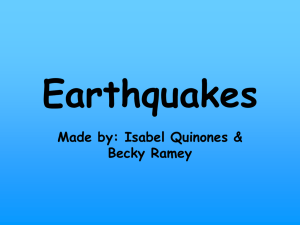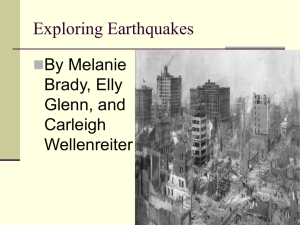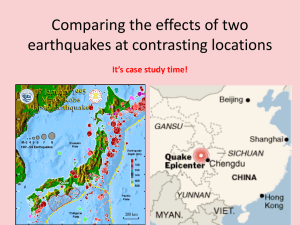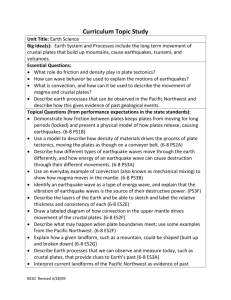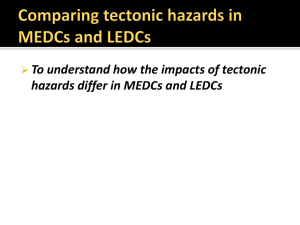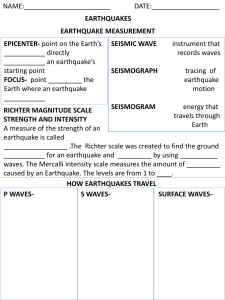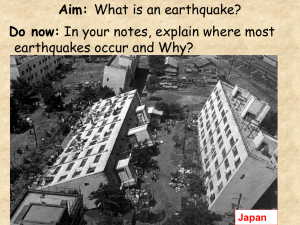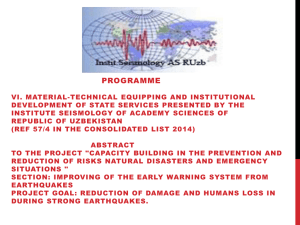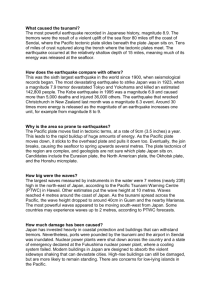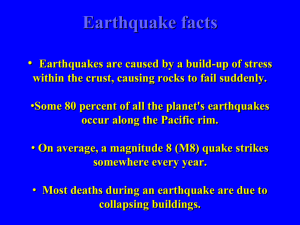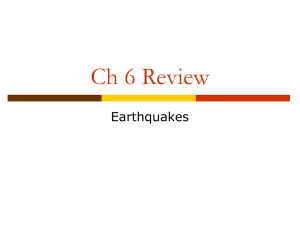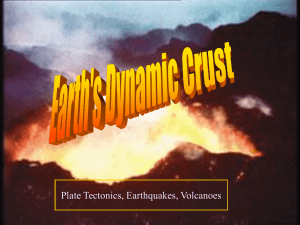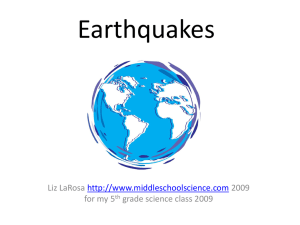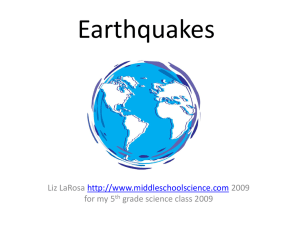Document
advertisement
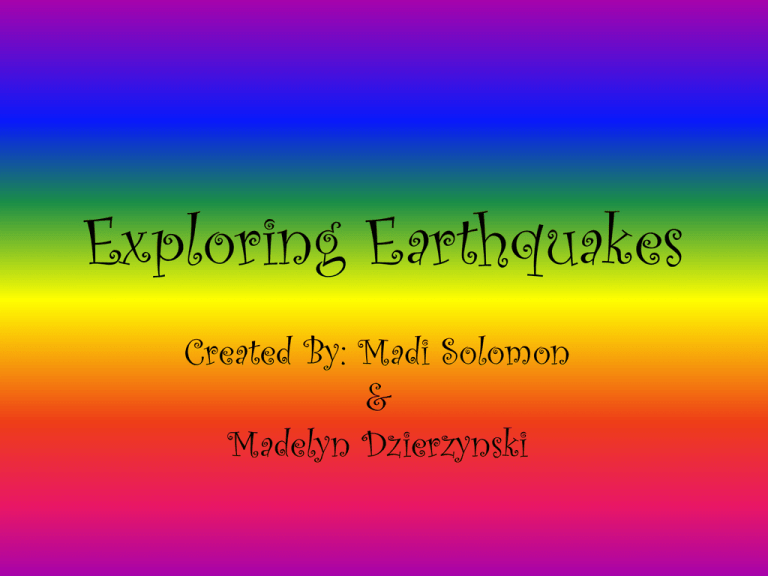
Exploring Earthquakes Created By: Madi Solomon & Madelyn Dzierzynski How many original “supercontinents” did Wegner’s theory of continental drift assume? • There is only 1 “supercontinent” and it is called Pangaea. What are the major plates that affect the United States? • The major plates that affected the U.S are North American Plate, Juan De Fuca Plate, and Pacific Plate. If you include Puerto Rico, then it should include the Carribean Plate. Why do think California has so many earthquakes but Florida doesn’t? • California is located in the highest hazard zone area. Florida is located in the lowest hazard zone area. Illinois is in the 2-4 category range. What is considered to be the most destructive earthquake in history? • WHICH- the 1556 Jiajing earthquake is the deadliest earthquake on record. • Magnitude-8 • Death Toll- harming approximately 830,000 people. • When- it occurred on the morning of 23 January 1556 AD. • Where- in Shaanxi, China and 97 counties in province of Shaanxi. What are three basic types of plate boundaries? • The three basic types of plate boundaries are convergent boundaries – plates that go toward each other, divergent boundaries – plates that move away from each other, and transform boundaries – two plates moving past each other. What are Tsunamis? What causes them? How fast do they travel? • Tsunamis are waves caused by the displacement of water from an earthquake. They usually move about 600 mph. What are two types of energy waves created by an earthquake and how do they differ? Which type of wave travels faster? • The two types of energy waves created by earthquakes are primary and secondary waves. They differ because a primary wave is a pulse of energy that travels quickly through the Earth and liquid. A secondary wave follows more slowly with a swaying motion that shakes the ground. The primary waves travels faster. How much more energy is released by a 7.2 earthquake than a 6.2 earthquake? • 7.2 earthquake produces 10 times more ground motion than a magnitude 6.2 earthquake, but it releases about 32 times more energy. What applications does seismology have besides measuring the magnitude and location of earthquakes? • Reflection and refraction seismology can be used in geophysical exploration to locate layers of varying density which can be used for example to locate underground hydrocarbons in the oil and gas industry. Seismology has also provided us with information on the internal structure and state of matter of the interior of the Earth. Where did most of the earthquakes happen last week? • The most earthquakes that occurred last week were in California. The most recent earthquake was occurred in Southern California. Can scientist predict earthquakes? • No, and it is unlikely they will ever be able to predict them. Scientists have tried many different ways of predicting earthquakes, but none have been successful. On any particular fault, scientists know there will be another earthquake sometime in the future, but they have no way of telling when it will happen. How do scientist know where an earthquake actually occurred? • Seismograms come in handy for locating earthquakes and being able to see the P wave and the S wave is important. You learned how P & S waves each shake the ground in different ways as they travel through it. P waves are also faster than S waves, and this fact is what allows us to tell where an earthquake was. Thank You For Watching! We Hope You Enjoyed!

